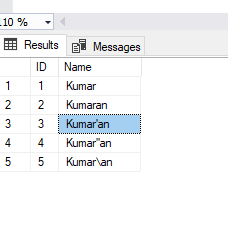Interesting one today:
When we run a query with SET STATISTICS TIME ON, we see CPU Time and Elapsed Time statistics for a query. What is the difference?
CPU Time is amount of CPU cycles (in time) spent by the workload thread on a particular processor/CPU. This is not an indication of the duration since the query began running on that CPU (there are some nuances — we’ll cover below)
Elapsed Time is the total duration of that thread, the time it took from start to end.
Simple Example:
Let’s say there is a workload thread for a simple query. The query runs for a bit (let’s say 2 seconds) and gets put on hold for a bit (let’s say 5 seconds), and then runs again (let’s say for 1 second) all the way to completion. The time the thread actually spent on CPU is counted towards CPU time (the two times, 2 & 1 seconds — 3 seconds total). Elapsed time is the total duration from when the query was issued to be executed to the time the result was generated — total 8 seconds.
Parallel Processing:
Let’s say there are 4 thread carrying out the workload of a query. Each run on a processor for 1 second and complete all the work in one shot.
Total CPU Time = 4 * 1 = 4 seconds (4 CPU’s with 1 second each)
Elapsed Time = 1 second (from start to finish)
Summary
CPU Time and Elapsed Time measure different time metrics for the same query. One measure the CPU cycles spent (in time) and the other measures the duration. The difference is important in figuring out what problem we are trying to solve.
- If a query has high Elapsed Time, but low CPU Time, that means, there is some CPU contention or other resource contention (waiting for all resources to be available before the query could be given a CPU).
- We want to look for ways to optimize the the way query is written — is it requesting for more resources (rows) than it needs. End user will feel the pain in waiting — if this happens to majority of the queries.
- Adding to this, if the CPUs are all busy all the time, that definitely means we need bigger CPUs for the workload or optimized queries.
- Conversely, if the CPU’s are not too busy at this time, that means, the thread is just waiting for other resources (concurrency — locked tables) to be released for this query to progress. Optimize the queries.
- If CPU Time is higher than Elapsed Time, then there is good amount of parallelism in play.
- As long as the CPUs are optimally utilized, this is not a problem, but if you notice more than 80% utilization all the time (the threshold is even lower if they are virtual CPUs), then we need to add extra CPUs to alleviate the situation.
- This may not be a problem right now, but it will evolve into a problem soon. One extra long query will snowball everything into high delays — to the point where a user will notice the delays.
Hope this helps,





